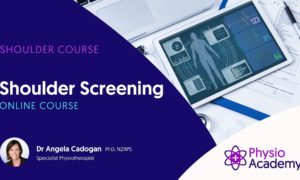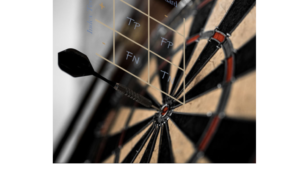Part 2/4
Module 2 Overview
Periodization programs for anterior cruciate ligament (ACL) pathologies within the rehabilitative and performance fields are desperately needed, but standardization and implementation are everywhere and really only hypothetical at this point. Through this course I want to teach, educate and improve upon what are the current outcomes for this pathology while demonstrating in video format progressively graded exercise that is periodized to best meet the demands of most field athletes who are status post ACL repair or reconstruction for return to sport. This course strives to educate providers within the sports medicine team on how to bridge the gap from the clinic to the field while utilizing and applying the best current research in rehabilitating patients’ who are status post ACL repair or reconstruction back to their pre-injury performance levels. Module 2 of this course seeks to accomplish this goal by detailing the best evidence-based practices for athletes during training weeks 9 through 28 from their initial date of surgery.
Learning Objectives
Because of the scope of this course, the interested enrollee can either purchase it in its entirety or through separate modules as well. Regardless of what method the enrollee chooses to use when enrolling in this course, they can still expect to be educated in applying the best available research and evidence while utilizing the systems, philosophies and methods I’ve developed when building separate Bridge Programs both in the private sector and for one of the top ranked pediatric orthopedic hospitals in the United States, as both programs supported patients in their quest for return to performance who were status post ACL repair or reconstruction.
Here in Module 2 of this Periodized ACL Program: Bands to Barbells, the course enrollee can expect to accomplish the following:
- The ability to recognize, justify, implement and coach different training means and methods into a patient’s rehabilitation regimen, including: supramaximal training methods, strength endurance interventions of varying tempos, explosive and maximal strength work, yielding versus overcoming isometric work, indirect sprint drills for both the patient’s acceleration and max velocity phases of sprinting, varying deceleration locomotor strategies, and varying transition locomotor strategies for field work that requires the patient to change direction.
- The enrollee should also be able to design, implement and coach athletes while using both a block and a triphasic periodization model for progressive field and weight-room work of higher intensities for athletes who are status post ACL reconstruction or repair upon completion of this module
- Enrollees should also be able to better regress and progress prescriptive exercise to the current levels of movement and locomotor capabilities of patients who are status post ACL repair or reconstruction while developing their energy system capacities in efforts to address any areas of limitation that they may have
- Enrollees should additionally complete this module with an enhanced understanding of the systems and processes necessary to build, implement, and coach a thorough reconditioning plan to help athletes that are status post ACL reconstruction or repair with return to sprinting and unrestricted weight-room work through the organization of therapeutic progressions into logical phases or rehab
- Enrollees should gain a better understanding from a programming and coaching standpoint of the processes and systems needed to meet the demands for return to play for athletes who are status post ACL reconstruction or repair as well.
- Enrollees should gain an appreciation of the team-based approach required for the proper rehabilitation of athletes who are status post ACL reconstruction, along with an understanding of the holistic approaches currently available to athletes in aiding their recovery from the physical stresses placed upon them during the rehabilitation process.
- Enrollees should gain an understanding of the progressive ways to coach and implement various neuromuscular interventions of higher intensities into a patient’s rehabilitation plan who are status post ACL repair or reconstruction.
Audience
It should be noted that this program is inclusive to anyone that is a part of the patient care team for patients’ that are status post ACL repair or reconstruction (ACLr), including but not limited to: physical therapists, athletic trainers, psychologists, nutritionists, mental skills coaches, strength and conditioning coaches, personal trainers, sport scientists, physician assistants, nurse practitioners, orthopedic surgeons, and so on. This is because Module 2 of this Periodized ACL Program outlines and details opportunities for physical therapists, physical therapy assistants, athletic trainers, strength and conditioning coaches and other healthcare personnel to delve deeper into current concepts surrounding the rehabilitation of athlete’s status post ACL injury and/or surgery. An overview of the following concepts surrounding patients who are status post ACL repair or reconstruction will be outlined here in training weeks 9 through 28 of rehabilitation: the periodization of training and rehabilitation needed for the long-term athletic development of the biomotor and bioenergetic abilities of athletes’ attempting to return back to sport, a hypothetical model for the ACLr rehabilitation process with regards to exercise variability and progressive resistance exercise both in the weight room and through field activities, the detailing of a hypothetical strength endurance block of training, the detailing of a hypothetical tri-phasic block of training, and proposed philosophies and systems needed in teaching and developing athletes linear speed mechanics through indirect sprint drilling.
So, if you haven’t checked out Module 1 of this Periodized ACL Program: The Fundamentals, please do so before proceeding forward with this course as the initial 8 weeks of rehabilitation for athletes who are status post ACL reconstruction were detailed there.
FAQs
What can interested students of this course expect upon completion when viewed from a career advancement standpoint?
This course was designed with the intention of providing students with the clinical experience commonly encountered only by students within the fields of athletic training, physical therapy, and strength and conditioning who were lucky enough to serve in the high-performance model of sport. Typically, this requires students within these disciplines to work for free during their clinical rotations for months on end in order to learn how to apply the knowledge they gathered during their didactic coursework while in college or university. Even worse, this occasionally requires post-graduate clinicians who are interested in making the switch to sports medicine to volunteer what little and precious time they have outside of their full-time job to field coverage and internships so that they can gather the necessary experience to make the jump to a more fulfilling career. This course aims to fill that clinical void from an application standpoint as it serves as the instrument for mentorship so few of us working in sports medicine had during their graduate studies while at university. While using ACL rehabilitation as the vehicle for learning sports medicine concepts and principles, Module 2 of this course promises to allow the interested student upon completion the following: the integration of both strength and conditioning and rehabilitation principles from an applied perspective to patient care within both the weight room and during field activities for athletes status post ACLr, an overview of the processes required for teaching and developing the necessary components for individual training sessions and microcycles as a whole, including the writing of dynamic warm-ups and cool-downs for field sessions using RAMP principles, and the writing of weight-room sessions introducing the themes of impact, med-ball work, and post-action potentiation. An overview will also be given from an applied standpoint of the systems and methods required for the long-term athletic development of the linear speed and running mechanics of patients who are status post lower extremity injury or ACLr, as well as applied teaching progressions for all of the major weight-room movements, including squats, deadlifts, lunges and their respective variations.
What makes this course different from other ACL courses?
While it’s true that clinicians and providers have plenty of options with regards to continued learning when it comes to ACL pathologies…….as anything from non-operative to operative management and protocoling, to surgical means and methods, and recently, discussions regarding brace wear both operatively and non-operatively have taken place……none to my knowledge take the enrollee every step of the way through the patient’s journey from the table to the turf from an APPLIED perspective while promising the interested learner accelerated recovery and injury reduction strategies for their athletes. This course consists of thousands of videos with corresponding interventions given under different contextual circumstances to best allow the athlete to not only return back to sport, but rather, back to performance at a level equal to that or ideally greater than that of where they were at pre-injury.
This course was designed and developed to give clinicians and all other associated members of the sports medicine team full access to my clinical toolbox from a therapeutic activity and exercise prescription standpoint so that they can best care for the individual in front of them. Drawing from my experiences both as a coach and clinician while working in professional sport, at world-renowned hospital systems, and from my time working with the special operation community from within the military health system, I can promise that every enrollee of this course will learn new strategies that they will be able to immediately implement into their clinical practices or performance models for the physical preparation of their athletes. Module 2 of this Periodized ACL Course will accomplish these goals for training weeks 9 through 28 of rehabilitation within the ACLr patient population, as higher means and methods for the rest of the patient’s rehabilitation will be detailed in subsequent modules.
Why create this course?
I decided to create my own course detailing the methodologies I use for ACL rehabilitation in order to save other providers and coaches years of time and money that I personally subjected myself to in order to grow professionally. This course is an assemblage of my time and stays in various high-performance settings from within the sports medicine industry, as the perspectives I gathered and present here encompass elements of different learning opportunities I was a part of while working in the professional, private, military, and hospital settings. These perspectives are all very different and unique when compared to one another, but most importantly, tried and tested as they were instrumental in the ACL specific Bridge Program that I developed and oversaw for one of the top rated pediatric orthopedic hospitals in the country, Scottish Rite Hospital. It should be noted this program boasted many positive statistics for participant enrollees, including a 0% participant ACL re-injury rate upon discharge from the program when tracked for 2 years after the post inception mark of the program. However, no statistic was more important to me than having 87% of my athletes who were status post ACL reconstruction being able to pass their return to sport testing by at least 9 months from their date of surgery. That is because current norms cite this statistic at only 45-60% for the industry standard.
This masterclass I’ve created on ACL rehabilitation is also unique from other courses in that it is predominately application based as enrollees will immediately learn easily digestible therapeutic exercise progressions that can be implemented starting on post-op day 1 of an athlete’s rehab. Not only that, but these progressions also span the entire continuum of care for the athlete, as I take the viewer of this program through each and every phase of rehab, including the return to performance phases of rehab, so that by the end of the course, all enrollees can effectively coach and effectively prescribe training means and methods to best fit the athlete in front of them. However, it should be noted that Module 2 of this Periodized ACL Program will detail only the best evidence-based practices from an applied perspective for athletes during weeks 9 through 28 of rehabilitation from their date of surgery. Subsequent modules will detail the remainder of the program as the course is built out for 68 total weeks.
So, if you’re a sports medicine professional trying to get your patients back to sport while performing at a level equal to that or greater than that of where they were at pre-injury, then consider buying this course! It guarantees to improve upon the currently citied metrics of only 45% of sports medicine professionals being able to return athletes who are status post ACL repair or reconstruction back to sport and performance! Not only that, but it also guarantees to reduce ACL re-injury rates within the post-surgical athletic population that sports medicine providers work with as well, while also significantly improving time of discharge for athletes that are status post ACL reconstruction down to just 9 months! I say all this because if providing better outcomes to your athletes is important to you, and if getting a leg up on the competitive landscape that is our current healthcare system is important to you, then this course is a no brainer as the return on investment through the generation of new referrals and sports medicine collaborations afforded to providers who become ACL return to sport specialists by taking this course is our pledge. This is because this course will ensure that the enrollee will learn the systems, philosophies, means, and methods for bridging the gap from rehab to performance for post-surgical ACL patients in an array of contexts that can be easily extrapolated to the rehabilitation needs of other athletes suffering from different lower extremity injuries as well.
What goal do you have for enrollees after they complete Module 2 of Periodized ACL Program?
The personal goal I had when creating this course was to give each and every enrollee of this course not only the knowledge I’ve gained through my professional career as both a physical therapist and as a strength and conditioning coach with regards to ACLr rehabilitation, but the clinical reasoning skills and framework needed to improve upon from what are the currently citied norms with regards to outcomes for this surgery. I wanted to organize and impart this knowledge to the viewer of this course so that they personally had the means I used and implemented when creating Bridge Programs for ACL performance training that I was a part of both in the private sector and at one of the most distinguished orthopedic hospital systems in the United States. And I tried to do this in a manner that used strategies which scaled the entire care continuum, from the table to the turf, and that could be immediately implemented by sports medicine professionals so that they could more readily overcome the major milestones commonly experienced by patients’ status post ACL repair or reconstruction. Module 2 of this Periodized ACL Course will accomplish these goals for training weeks 9 through 28 of rehabilitation within the ACLr patient population, as higher means and methods for the rest of the patient’s rehabilitation will be detailed in subsequent modules.
For more information on ACL rehabilitation in patients status post ACL repair or reconstruction, please refer to the next module of this course….. Module 3, as this module will detail the best evidence-based practices for athletes during training weeks 29 through 44 from their initial date of surgery. An overview of the following concepts surrounding patients who are status post ACLr will be outlined in training weeks 29 through 44 of rehabilitation: the periodization of training and rehabilitation needed for the long-term athletic development of the biomotor and bioenergetic abilities of athletes’ attempting to return back to sport, a hypothetical model for the ACLr rehabilitation process with regards to exercise variability and progressive resistance exercise both in the weight room and through field activities, the detailing of a hypothetical transition block of training for developing an athletes power and linear speed mechanics, the detailing of a running program to develop an athletes ability to handle progressive foot contacts, the detailing of a sprinting program to develop an athletes acceleration and top-end speed mechanics, and the describing of the sweeping systems needed in teaching and developing athletes change of direction and agility mechanics through a variety of methods that take advantage of environmental constraints and external targets while gradually increasing their exposure to more chaotic environments





